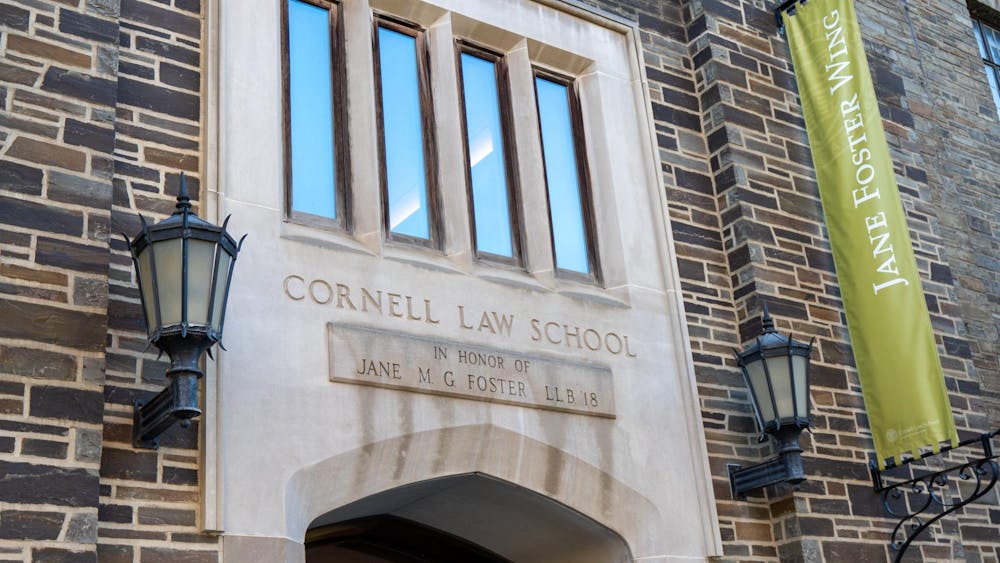The word “Bhangra” literally translates to the phrase “intoxicated with joy.” I interacted with a direct product of that joy on April 19 when I sat down for a conversation with three dancers on Cornell Bhangra's 35-member team: President Shriya Bansal ’25, Rishima Kasi ’25, and Tanirika Choudhry ’28. According to its members, Bhangra is a traditional folk dance with origins in the Punjab state of India. Originally performed to celebrate the harvest, the “high-energy and joyous dance form” is group-oriented with the purpose of expressing vibrant “love and friendship between people.”
Reflective of the dance style they perform, seniors Bansal and Kasi likened the friendships they’ve made over the past four years to familial bonds. “Joining this team freshman fall was probably the best decision I made throughout my college experience … Everyone welcomed me with open arms and that truly is the definition of a family. No matter what, you always have 35 people who genuinely love you and would do so much for everyone on the team,” Kasi said. Even for new members like Choudhry, the weeks-long process of integrating with the team and learning about foundational elements of Bhangra exposed her to a “sense of community” she’ll carry with her for the next three years.
Choudhry particularly spoke of her transition from classical dance to Bhangra on a co-ed, collegiate team. For Choudhry, who had always been curious about Bhangra, Cornell’s team was the perfect opportunity to “translate [her] past dance experience while also learning something entirely new.” During new members’ first semester, captains and associate captains spend approximately six to seven hours a week training dancers of varying experience levels before they can start practicing with upperclassmen. “Many people who join the team are new to Bhangra, so it’s a lot of learning and adjusting. For me personally, classical differs a bit from Bhangra, so adjusting the way that I dance and incorporating new skills has definitely been a learning curve and it’s something I’m constantly improving on,” said Choudhry. Come late October, new members have their first opportunity to perform on-stage during Diya Jale, a community-wide dance and music event.
Alongside widespread national recognition, most notably during the Macy's Thanksgiving Day Parade in 2023, Cornell Bhangra is a well-established fixture within the dance community, averaging about two to three competitions per semester. For many members, it’s a “once-in-a-lifetime” opportunity to perform competitively since the team holds internal auditions for a select number of positions on the national stage. However, the entirety of Cornell Bhangra always has the opportunity to travel to competitions together to show support for their friends. “For one of our recent comps in Cleveland, the entire team went. We only had ten people on comp stage, but there were like twenty other people also going and it was a lot of fun. We all drove up together and stopped at Niagara Falls on the way down,” said Choudhry.
Beyond the enthusiastic dedication of its members, perhaps Cornell Bhangra’s most impressive accomplishment is PAO. Going on its 22nd year, PAO is the largest Bhangra exhibition in the nation, not to mention the largest annual event hosted in the city of Ithaca. Bhangra teams from all over the country fly or drive to Ithaca each year to showcase their choreography and signature dance style. “Since we have teams flying in from around the country, it’s really cool to interact with new people and see the way that they interpret Bhangra and the way that they choreograph. Every choreo is a reflection of the team and what aspect of Bhangra, whether traditional or modern, they choose to integrate,” said Kasi. As for Cornell Bhangra’s take on the dance form, “it really depends on the captains every year since they determine the choreo,” said Bansal. “Since my freshman year we’ve had a very modern take on the music we put in our mix, the types of dance moves we do and the types of segments we do. However this year, our captain actually took a traditional turn on things, so the music and the moves that we were doing were more of a folk style.”
Hosting PAO is no small feat. As president, Bansal and fellow executive members are at the forefront of numerous tasks and responsibilities that need to be accounted for so that the event can take place. “It’s the smallest things, like figuring out what we’re going to order the teams for lunch on the Saturday before the show, to the bigger things like booking venues, finding teams and figuring out registration packets,” she described. Naturally, though, “PAO is a huge bonding experience for the team because everyone gets to perform and we let the underclassmen take charge [of choreography] to let them see what it’s like to run a mini team.” Amidst a quickly approaching finals season and end to the school year, the entirety of Cornell Bhangra comes together in the days leading up to PAO, practicing into the early hours of the morning before the big day.
PAO XXII will take place on May 3 and all proceeds will be donated to Ithaca Welcomes Refugees (IWR). The passion, dedication and intoxicating joy that Cornell Bhangra’s members impressed upon me this weekend was more than enough to guarantee my attendance. I encourage you to take my word for it and do the same.
Charlotte Feehan is a freshman in the College of Arts and Sciences. She can be reached at cgf47@cornell.edu.











